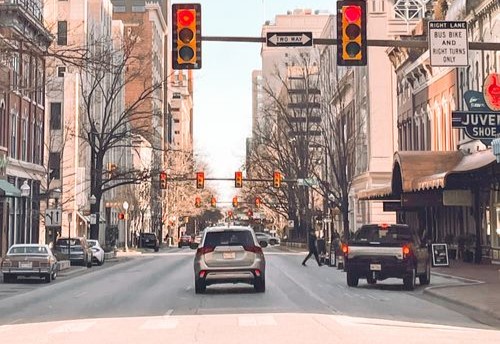Adapted from the writings of Dayan Yitzhak Grossman April 18, 2024 AP News reports: A…

Bais HaVaad on the Parsha, Parshas Trumah
Rules of the Road
February 15, 2024
Excerpted and adapted from a shiur by Dayan Yitzhak Grossman
You shall make the planks of the Mishkan…ten amos the length of each plank, and an amah and a half the width of each plank.
Shmos 26:15-16
The agalos (wagons) that were used to carry the Mishkan traveled two abreast. Each agalah was five amos wide, and each pair traveled five amos apart. A levi ran alongside to ensure that the krashim (planks) didn’t fall, occupying a space of one amah. All told, a path of 16 amos was required, from which the Gemara (Shabbos 99a) derives that this is the width of a derech reshus harabim (a public thoroughfare). Rashi, the Rambam, and the Shulchan Aruch say that this measurement is a necessary condition for a domain to be a reshus harabim for the purpose of hotza’ah (carrying) on Shabbos.[1] An implication of this status is that in such a place, the construction of a typical municipal eiruv would have no halachic effect.
Many (perhaps most) American roads meet this standard, as they are generally about 50 feet wide. Poskim here have debated the question of whether eiruvin can be built in major US cities for over a century. R’ Zechariah Rosenfeld, a prominent rav in St. Louis in the 1890s, claimed (in his Tikvas Zechariah) that American streets did not qualify as reshus harabim, because people avoided walking in them due to the danger of being struck by trolleys. Although they did walk on the sidewalks, those were not 16 amos wide. R’ Avraham Yudelevitz (Bais Av) argued that because people could walk in the streets if they chose, they are indeed a reshus harabim. Moreover, because the sidewalks connect with very wide streets at the edge of the city with no trolleys, the entire area is a reshus harabim.
In the last century, R’ Yekusiel Halberstam (Divrei Yatziv) and R’ Menashe Klein (Mishneh Halachos) took the lenient position, arguing that even our major streets are not reshus harabim. In addition to the danger to pedestrians posed by automobile traffic, walking in such streets is also illegal, and to qualify as reshus harabim, a thoroughfare must be nicha tashmishtei (convenient to use).[2] But R’ Moshe Feinstein held that such roads are certainly a reshus harabim.
[1] Tosfos, the Rama, and others maintain that in addition to the width requirement, reshus harabim status requires that the place be traversed by 600,000 people per day.
[2] See Shabbos 7a.





